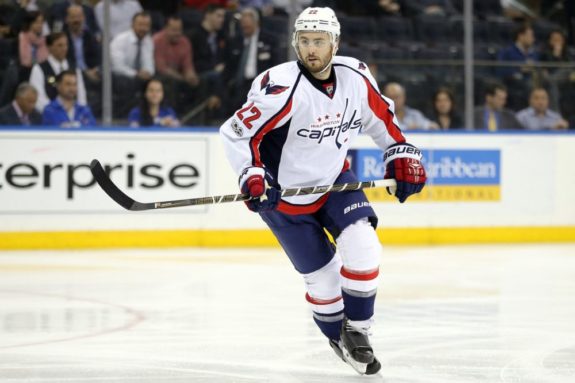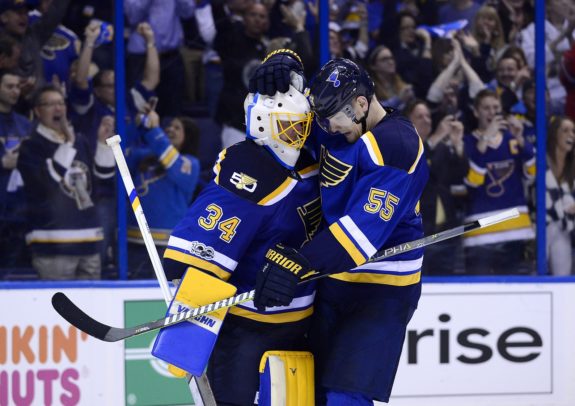Despite the absurd shot differentials in their opening-round series, the Blues’ defense has been the key to thwarting the Wild in three of the first four games.
Most playoff previews started an assessment of St. Louis with the blue line. In part, that’s because of the Wild’s deep forward group. But it’s also because the Blues looked like sellers at the trade deadline when they moved Kevin Shattenkirk to Washington. In return for one of their best defenders, the team got nothing that would help them this season. (Though, Zach Sanford has played three postseason games for the Blues.)

Losing a player of Shattenkirk’s ilk is huge. He is a legit top-four defender with a major role on the power play. Yet, their blue line has been the major factor in slowing the Wild’s offensive attack, which ranked second in goals per game and 10th in shots per game coming into the postseason.
Lots of credit has gone to Jake Allen. Justifiably so, even if he’s given up big rebounds and had mental lapses. Allen allowed only three goals on 117 shots through the first three games. However, the real heroes are on the blue line. Alex Pietrangelo and Jay Bouwmeester have been fantastic, overshadowing solid performances from most of that defensive group. That includes an unexpected offensive outburst from Joel Edmundson, who scored twice in the first four games. He entered the series with only four goals in 136 career regular season games.
Stopping Speed and Scoring Chances
Former Wild coach Mike Yeo is owed some credit here for largely stopping the Wild’s transition speed. The Blues have clogged the neutral zone by having defensemen play conservatively in the offensive zone, preventing the kind of stretch passes that led to a Martin Hanzal goal in Game 4.
However, you can’t extoll the virtues of the St. Louis blue line without acknowledging it hasn’t been all spring sunshine and high fives. They’ve given up a tremendous number of shots and shot attempts. As a team, they’ve been outplayed in the majority of the series. The Wild have taken 64.47 shot attempts per 60 minutes of all-situation play, which leads all playoff teams. The Wild have also posted 33.75 shots per hour, which ranks third. Neither stat showcases impressive defending on the part of the Blues.
While getting out-chanced overall, the Blues have limited the Wild to 7.45 scoring chances for per 60 minutes. That’s far above the Blues’ 5.35, which is the lowest among all playoff teams, including those already eliminated. Nonetheless, the Wild’s mark ranks 12th among playoff teams, which is not proportionate to the number of shots and shot attempts they are getting.
It’s easy to see why the disparity exists. The Blues defense is collapsing around Allen and providing a lot of protection in the so-called home plate area. They’re clearing out rebounds and blocking shots, limiting the number of Wild shots that are truly dangerous.
The Blues aren’t controlling play, but their defense is dictating how the game is played. That’s been a key to the success the Blues have had so far.

Moving Forward
For St. Louis, the continued success of the blue line will be key to winning the series. They’re affording Allen the chance to make easy saves, slowing the Wild’s transition game. At least, they had slowed the transition game until Game 4 when the Wild didn’t always turn those opportunities into scoring chances but were able to infuse speed back into their game.
If the Blues aren’t able to continue suppressing Wild chances in the home plate area and stifling the Wild’s speed, the series could easily start to swing the other way with the amount of time the Wild are spending in the Blues’ zone. (Though, with a 3-1 series lead the Blues have room for error.) The plan has worked so far, even though there is the indisputable feeling if you replay Game 1 another 10 times, the Wild win nine of them.
For the Blues, it’s a delicate balance. When they’re getting outplayed, they’ve been able to outmaneuver the Wild with a stingy defense. It hasn’t always been pretty, but if they can protect the slot and slow the Wild’s zone entries consistently, they may be able to close out this series in time to take a bit of a breather before facing Nashville’s own stingy defense in the second round.